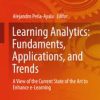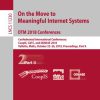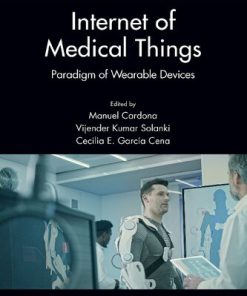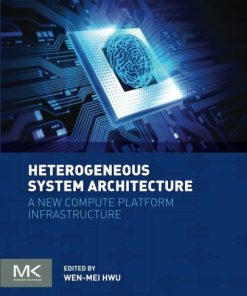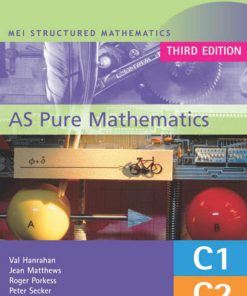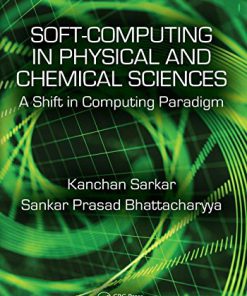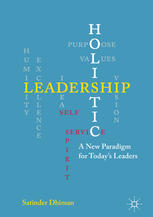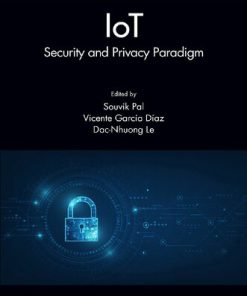Internetware A New Software Paradigm for Internet Computing 1st Edition by Hong Mei,Jian Lu 9789811025457 9811025452
$50.00 Original price was: $50.00.$25.00Current price is: $25.00.
Internetware A New Software Paradigm for Internet Computing 1st Edition by Hong Mei,Jian Lu – Ebook PDF Instant Download/Delivery:9789811025457,9811025452
Full download Internetware A New Software Paradigm for Internet Computing 1st Edition after payment

Product details:
ISBN 10:9811025452
ISBN 13:9789811025457
Author:Hong Mei,Jian Lu
This book presents a comprehensive introduction to Internetware, covering aspects ranging from the fundamental principles and engineering methodologies to operational platforms, quality measurements and assurance and future directions. It also includes guidelines and numerous representative real-world case studies that serve as an invaluable reference resource for software engineers involved in the development of Internetware applications. Providing a detailed analysis of current trends in modern software engineering in the Internet, it offers an essential blueprint and an important contribution to the research on software engineering and systems for future Internet computing.
Internetware A New Software Paradigm for Internet Computing 1st Table of contents:
1 Internetware: A Shift of Software Paradigm
1.1 Introduction
1.2 The Internetware Paradigm
1.2.1 The Need of a Paradigm Shift
1.2.2 Methodological Reflections
1.2.3 Architecting Principles for Internetware
1.2.4 Our Roadmap and Explorations
1.3 Open Coordination Model
1.3.1 Coordination Model for Internetware
1.3.2 A Software Architecture Based Approach
1.4 Environment-Driven Model
1.4.1 Structure and Dynamics
1.4.2 Framework and Techniques
1.5 Dependability Assurance Framework with Trust-Management
1.5.1 A Trust-Based Approach
1.5.2 A Dependability Assurance Framework with Trust Management
1.6 Conclusion
References
2 Technical Framework for Internetware: An Architecture Centric Approach
2.1 Introduction
2.2 Software Model of Internetware
2.2.1 Basic Component Model
2.2.2 Open Collaboration Model
2.2.3 Context Driven Model
2.2.4 Intelligent Trustworthy Model
2.3 Middleware for Internetware
2.3.1 The Implementation Model of Basic Internetware Entities
2.3.2 The Implementation Model of On-Demand Collaborations
2.3.3 The Autonomic Management of Middleware
2.3.4 Componentization of Middleware
2.4 Engineering Approach for Internetware
2.4.1 Software Architecture in the Whole Lifecycle
2.4.2 Development of Internetware Basic Entities and Their Collaborations
2.4.3 Domain Modeling for Internetware
2.5 Conclusion
References
Internetware Software Model
3 On Environment-Driven Software Model for Internetware
3.1 Introduction
3.2 An Approach to the Environment-Driven Model
3.2.1 Overall Interaction Patterns of Environment-Driven Applications
3.2.2 A Structuring Model for Environment-Driven Applications
3.2.3 Model and System Characteristics
3.3 Environment Modeling and Enabling Techniques
3.3.1 Context Processing Framework
3.3.2 Ontology-Based Modeling of Dynamic Context
3.3.3 Logic Distance-Based Context Retrieval
3.3.4 Blurring Degree-Based Privacy Protection
3.3.5 Negotiation-Based Context Information Selection
3.4 Goal-Driven Adaptation and Rearon Ontologies
3.4.1 Rearon Ontologies
3.4.2 Overall Interaction Patterns of Environment-Driven Applications
3.5 Prototypes and Experiments
3.5.1 Artemis-ARC
3.5.2 Artemis-MAC
3.5.3 Artemis-FollowMeLite
3.5.4 Artemis-FollowMeAgent
3.5.5 Environment-Driven Applications
3.6 Related Work
3.7 Conclusion
References
4 On Self-adaptation Model for Internetware
4.1 Introduction
4.2 Approach Overview
4.3 Key Techniques
4.3.1 Basic SA Model
4.3.2 SA Reflection
4.3.3 SA Dynamism
4.3.4 SA Reasoning
4.3.5 SA Trustworthiness
4.3.6 A Tool for Modeling SA in the Whole Lifecycle
4.4 Case Study
4.4.1 Pattern Driven Self-adaptation
4.4.2 Style Driven Self-adaptation
4.4.3 Performance Impact
4.5 Related Work
4.6 Conclusion
References
5 On Requirements Model Driven Adaption and Evolution of Internetware
5.1 Introduction
5.2 Matching and Composing Internetware Components
5.2.1 A Component Meta Model
5.2.2 Component Lifecycle
5.2.3 Component Composition Rules
5.3 Components Adaptation
5.3.1 Adaptation Strategies
5.3.2 Adaptation Process
5.4 Internetware Testbed and Case Studies
5.4.1 Internetware Testbed
5.4.2 Model-Driven Development and Evaluation of Internetware Applications
5.4.3 Enterprise Applications Example
5.4.4 Experiment Scenarios on the Collaborations and Evolutions of Internetware Components
5.5 Related Work
5.6 Conclusion and Future Work
References
Internetware Operating Platform
6 Runtime Recovery and Manipulation of Software Architecture of Component-Based Systems
6.1 Introduction
6.2 Approach Overview
6.2.1 Architectures in ABC
6.2.2 Conceptual Framework
6.3 Characteristics of Software Architecture at Runtime
6.3.1 Software Architecture at Design Time
6.3.2 Software Architecture at Runtime
6.3.3 Description for Software Architecture Recovered at Runtime
6.4 Recovery of Software Architecture at Runtime
6.4.1 Overview of PKUAS
6.4.2 Recovery of Basic Elements
6.4.3 Construction of Architecture Views
6.4.4 Enrichment of Semantics
6.5 Manipulation of Recovered Software Architecture at Runtime
6.5.1 Manipulation via Reflection
6.5.2 Programming Model
6.5.3 Graphical Tool
6.6 Performance Evaluation
6.7 Related Work
6.8 Conclusion and Future Work
References
7 Supporting Runtime Software Architecture: A Bidirectional-Transformation-Based Approach
7.1 Introduction
7.2 Runtime Software Architecture
7.2.1 An Illustrative Example
7.2.2 A Formal Description of Runtime Software Architecture
7.3 Maintaining Causal Connections by Architecture-System Synchronization
7.3.1 The Four Properties
7.3.2 The Challenges
7.4 Architecture-System Synchronization Based on Bi-transformation
7.4.1 Enabling Techniques
7.4.2 The Synchronization Algorithm
7.4.3 Assumptions
7.4.4 Discussion About the Algorithm and the Properties
7.5 Generating Synchronizers for Legacy Systems
7.5.1 Implementing the Generic Synchronization Engine
7.5.2 Generating Specific XMI Parsers and System Adapters
7.6 Case Studies
7.6.1 C2-JOnAS
7.6.2 Client/Server-JOnAS
7.6.3 Other Case Studies
7.6.4 Summary and Discussion
7.7 Related Work
7.8 Conclusion
References
8 Low-Disruptive Dynamic Updating of Internetware Applications
8.1 Introduction
8.2 Dynamic Updating: Eager Versus Lazy
8.3 Javelus: Overview
8.4 Dynamic Patch Generation
8.4.1 Identifying Changed Classes
8.4.2 Default Transformation and Custom Transformers
8.5 Updating Code
8.5.1 Reaching a DSU Safe Point
8.5.2 Updating Classes
8.6 Updating Objects
8.6.1 Affected Types
8.6.2 Optimizing Object Validity Checks
8.6.3 Mixed Object Model
8.6.4 Transforming Objects
8.6.5 Continuous Updating
8.7 Evaluation
8.7.1 Experiments with Micro Benchmarks
8.7.2 Experiments with Tomcat and H2
8.8 Related Work
8.8.1 Dynamic Updating Systems for Java
8.8.2 Dynamic Updating Systems for Other Programming Languages
8.8.3 Dynamic Updating for Component-Based Systems
8.9 Conclusion
References
9 Specification and Monitoring of Data-Centric Temporal Properties for Service-Based Internetware
9.1 Introduction
9.2 Motivation Example
9.2.1 Car Rental Application
9.2.2 Supply Chain Application
9.3 A Language for Specifying Data-Centric Properties
9.3.1 The Syntax of Par-BCL
9.3.2 Par-BCL for Data-Centric Properties
9.4 Monitoring Model of Par-BCL
9.4.1 Filtering
9.4.2 Parameter Binding
9.4.3 Verification
9.5 Efficient Monitoring Process
9.5.1 Parameter State Machine
9.5.2 Monitor Instance
9.5.3 Monitoring Algorithm
9.5.4 Management of Monitor Instances
9.5.5 Architecture and Implementation
9.6 Experiments
9.6.1 Violation Detection
9.6.2 Performance Evaluation
9.6.3 Overhead Evaluation
9.7 Discussion
9.8 Related Work
9.8.1 Engineering Self-adaptive System
9.8.2 Runtime Monitoring of Web Services
9.8.3 Parametric Properties Monitoring for OO Systems
9.9 Conclusion
References
10 Runtime Detection of the Concurrency Property in Asynchronous Pervasive Computing Environments
10.1 Introduction
10.2 Property Detection for Pervasive Context
10.2.1 Asynchronous Message Passing and Logical Time
10.2.2 Consistent Global State (CGS) and the Lattice Structure Among CGSs
10.2.3 Specification of Contextual Properties
10.3 Concurrent Activity Detection in Asynchronous Pervasive Computing Environments
10.3.1 Def(φ) and Concurrent Contextual Activities
10.3.2 Design of the CADA Algorithm
10.3.3 Discussions
10.4 Performance Analysis
10.4.1 The Causes of Faults
10.4.2 Concurrency Among Sensed Activities
10.4.3 Sensed and Physical Activities
10.4.4 Discussions
10.5 Experimental Evaluation
10.5.1 Implementation
10.5.2 Experiment Setup
10.5.3 Effects of Tuning the Update Interval
10.5.4 Effects of Tuning the Message Delay
10.5.5 Effects of Tuning the Duration of Contextual Activities
10.5.6 Effects of Tuning the Number of Non-checker Processes
10.5.7 Lessons Learned
10.6 Related Work
10.7 Conclusion
References
Internetware Engineering Approach
11 A Software Architecture Centric Engineering Approach for Internetware
11.1 Introduction
11.2 Overview of ABC Methodology
11.3 Feature Oriented Requirement Modeling for Internetware
11.4 Architecture Modeling of Self-adaptive Internetware
11.5 Reflective Middleware as Internetware Operating Platform
11.5.1 SA-Based Reflection
11.5.2 Autonomous Components
11.6 Conclusion
References
12 Toward Capability Specification of Internetware Entity Based on Environment Ontology
12.1 Introduction
12.2 Environment Ontology
12.2.1 Upper Environment Ontology
12.2.2 Domain Environment Ontology
12.2.3 Construction of Domain Environment Ontology
12.3 Environment Ontology Based Capability Specification
12.3.1 Elements of EnOnCaS
12.3.2 An Example Capability Profile
12.3.3 Capability Specification Generation
12.3.4 Internetware Entity Discovery
12.4 Related Work
12.5 Conclusion
References
13 Feature-Driven Requirement Dependency Analysis and High-Level Software Design
13.1 Introduction
13.2 The Preliminaries
13.2.1 Definition of Features
13.2.2 Basic Attributes of Features
13.2.3 Operationalization of Features
13.2.4 Responsibility Assignment
13.2.5 Resource Containers
13.3 Feature Dependencies
13.3.1 Refinement
13.3.2 Constraint
13.3.3 Influence
13.3.4 Interaction
13.4 Connections Between Dependencies
13.4.1 Refinement-Imposed Constraints
13.4.2 Constraint and Interaction
13.4.3 Influence and Interaction
13.5 Verification of Constraints and Customization
13.5.1 Feature-Oriented Customization-Based Requirement Reuse
13.5.2 Customization Through a Series of Binding-Times
13.5.3 Three Verification Criteria
13.5.4 The Effectiveness of the Three Verification Criteria
13.6 Design of High-Level Software Architecture
13.6.1 An Overview
13.6.2 Resource Container Identification
13.6.3 Component Seed Creation
13.6.4 Component Construction
13.6.5 Interaction Analysis
13.7 Related Work
13.8 Conclusions and Future Work
References
14 rCOS: A Refinement Calculus of Internetware Systems
14.1 Introduction
14.2 Semantic Basis
14.2.1 Programs as Designs
14.2.2 Refinement of Designs
14.3 Syntax of rcos
14.3.1 Commands
14.3.2 Expressions
14.4 Semantics
14.4.1 Structure, Value and Object
14.4.2 Static Semantics
14.4.3 Dynamic Variables
14.4.4 Dynamic States
14.4.5 Evaluation of Expressions
14.4.6 Semantics of Commands
14.4.7 Semantics of a Program
14.5 Object-Oriented Refinement
14.5.1 Object System Refinement
14.5.2 Structure Refinement
14.6 Refinement Rules
14.7 Conclusions
14.7.1 Related Work
14.7.2 Support UML-like Software Development
14.7.3 Limitation and Future Work
References
Experiments and Practices of Internetware
15 Refactoring Android Java Code for On-Demand Computation Offloading
15.1 Introduction
15.2 DesignPatternforComputation Offloading
15.2.1 The Source Structure and the Target Structure
15.2.2 Refactoring Steps Overview
15.2.3 An Illustrative Example
15.3 Implementation of DPartner
15.3.1 Detect Movable Classes
15.3.2 Generate Proxies
15.3.3 Transform App Classes
15.3.4 Cluster App Classes
15.3.5 Determine the Computations to Be Offloaded
15.3.6 Offload Computations at Runtime
15.4 Evaluation
15.4.1 Experiment Setup
15.4.2 Performance of Refactoring
15.4.3 Comparison of App Performance
15.4.4 Comparison of App Power Consumption
15.4.5 The Effect of On-Demand Offloading
15.4.6 Experiments on 3G Network
15.5 Related Work
15.6 Conclusion and Future Work
References
16 Towards Architecture-Based Management of Platforms in Cloud
16.1 Introduction
16.2 Motivating Example
16.3 An Architecture-Based Model for Platform Management in Cloud
16.3.1 Approach Overview
16.3.2 The Architecture-Based Meta-Model
16.3.3 Runtime Changes
16.4 Implementations of the Runtime Architecture-Based Model
16.5 Evaluation
16.5.1 Anti-pattern Detection
16.5.2 VM States Checking
16.6 Related Work
16.7 Conclusion and Future Work
References
17 Golden Age: On Multi-source Software Update Propagation in Pervasive Networking Environments
17.1 Introduction
17.2 System Model
17.3 Update Propagation Strategies
17.3.1 Random Spread
17.3.2 Youngest Age
17.3.3 Golden Age
17.4 Performance Analysis
17.4.1 Notations and Assumptions
17.4.2 Number of Updated Nodes in the System
17.4.3 Principles for Choosing the Golden Age
17.5 Numerical Results
17.5.1 Simulation Setup
17.5.2 The Number of Updated Nodes
17.5.3 Impact of Source Density
17.5.4 Impact of Buffer Size
17.5.5 Impact of Update Interval
17.5.6 Performance of Different Golden Age Parameter Choosing Rules
17.6 Related Work
17.7 Conclusion
References
18 GreenDroid: Automated Diagnosis of Energy Inefficiency for Smartphone Applications
18.1 Introduction
18.2 Background
18.3 Empirical Study
18.3.1 Problem Magnitude
18.3.2 Diagnosis and Bug-Fixing Efforts
18.3.3 Common Patterns of Energy Bugs
18.3.4 Threats to Validity
18.4 Energy Efficiency Diagnosis
18.4.1 Approach Overview
18.4.2 Application Execution and State Exploration
18.4.3 Detecting Missing Sensor or Wake Lock Deactivation
18.4.4 Sensory Data Utilization Analysis
18.5 Experimental Evaluation
18.5.1 Experimental Setup
18.5.2 Effectiveness and Efficiency
18.5.3 Necessity and Usefulness of AEM Model
18.5.4 Impact of Event Sequence Length Limit
18.5.5 Comparison with Resource Leak Detection Work
18.5.6 Energy Saving Case Study
18.5.7 Discussions
18.6 Related Work
18.6.1 Energy Efficiency Analysis
18.6.2 Energy Consumption Estimation
18.6.3 Resource Leak Detection
18.6.4 Information Flow Tracking
18.7 Concluding Remarks
References
Conclusion and Future Outlook
19 Conclusion and Future Outlook
People also search for Internetware A New Software Paradigm for Internet Computing 1st :
software architecture paradigms
in the new paradigm of the information age quizle
in the new paradigm of the information age
tinternet software definition
new computing paradigms
Tags:
Hong Mei,Jian Lu,Paradigm,Internetware,Computing
You may also like…
Medicine - Others
Engineering
A New Paradigm for Environmental Chemistry and Toxicology From Concepts to Insights Guibin Jiang
Computers - Hardware
Politics & Philosophy - Anthropology
Mathematics - Mathematical Theory
Politics & Philosophy - Cultural
Globalization and Latin American Cinema: Toward a New Critical Paradigm Sophia A. Mcclennen
Business & Economics
Holistic Leadership: A New Paradigm for Today’s Leaders 1st Edition Satinder Dhiman (Auth.)
Engineering
IoT: Security and Privacy Paradigm (Internet of Everything (IoE)) 1st Edition Souvik Pal (Editor)


